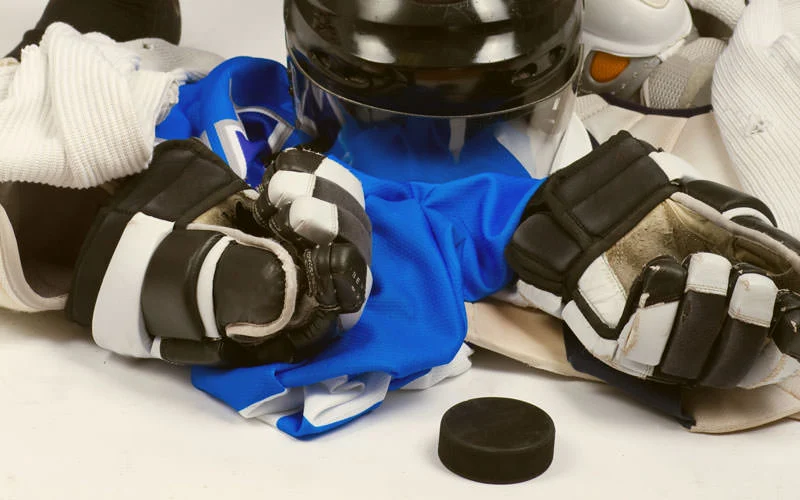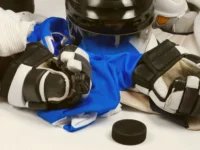The Role of Protective Gear in Modern Hockey Equipment

Hockey is one of the most dynamic and physically demanding sports in the world. Fast-paced skating, powerful shots, and hard body contact make protection an absolute priority — not an option. Modern hockey gear has evolved far beyond simple pads and helmets; it’s now a blend of advanced materials, ergonomic design, and precise engineering that keeps players safe without compromising mobility or performance.
Understanding the role of protective gear is essential for anyone looking to play at their best while minimizing the risk of injury. Here’s how today’s equipment protects players and why investing in quality gear is vital for long-term safety and comfort.
1. How Hockey Gear Has Evolved Over Time
In the early days of hockey, protection was minimal — players wore thin leather gloves, basic shin pads, and occasionally, helmets. As the game became faster and more physical, equipment technology had to keep up.
Today’s protective gear uses lightweight composites, moisture-wicking fabrics, and impact-absorbing foams to shield players from collisions, sticks, and pucks traveling over 160 km/h. Manufacturers now design gear with anatomical precision to provide safety without restricting movement, ensuring players stay agile and confident on the ice.
2. Helmets: The Most Critical Piece of Protection
A helmet is the foundation of every hockey player’s protective setup. It guards against the most serious risks — concussions and skull injuries.
Key Features of Modern Helmets:
- Multi-density foams to absorb high- and low-impact collisions.
- Adjustable shells for a snug, custom fit.
- Ventilation systems to improve comfort and reduce fogging.
- Full face shields or cages to protect eyes and teeth.
Proper helmet fit is non-negotiable — it should sit level, cover the forehead, and stay secure during play. Players should replace helmets every few seasons or after any significant impact.
3. Shoulder Pads: Protecting the Upper Body
Shoulder pads safeguard vital areas including the collarbone, chest, and upper back while allowing natural arm movement.
Modern designs feature:
- Segmented padding for flexibility.
- Lightweight foams and plastic inserts to disperse impact energy.
- Ventilated materials that keep the player cool during intense games.
Well-fitted shoulder pads should not restrict motion or shift during contact. They play a crucial role in absorbing force from body checks, pucks, and accidental collisions.
4. Elbow Pads: Small but Essential
Elbows take a surprising amount of abuse during play — from falls, board contact, and accidental hits. High-quality elbow pads protect both the joint and surrounding areas without feeling bulky.
Look for:
- Three-piece designs that move naturally with your arm.
- Secure strapping systems to prevent slipping.
- Cushioned forearm guards for extended protection.
Players often overlook elbow protection, but properly fitted pads can prevent painful injuries and keep arms flexible throughout gameplay.
5. Gloves: Protection Meets Dexterity
Gloves must protect hands and wrists while preserving fine motor control for stickhandling and shooting. Modern gloves balance flexibility and padding through multi-layered construction.
Key Features:
- Reinforced palms for durability and stick control.
- Segmented cuffs to protect wrists without hindering movement.
- Ventilated interiors to prevent moisture buildup.
Good gloves should feel snug but allow free wrist rotation — an essential element of puck control.
6. Shin Guards and Knee Protection
The lower legs are constantly exposed to sticks, pucks, and falls. Shin guards protect from direct impacts, while integrated knee caps absorb force from slides and checks.
Modern shin guards are contoured to follow the leg’s natural shape and feature adjustable straps for stability. For optimal protection:
- The pad should cover from the top of the skate tongue to just above the knee.
- Players should choose the right fit based on whether they wear socks over or under the pads.
7. Pants and Girdles: Core and Hip Protection
Hockey pants (or girdles with shells) are designed to shield the hips, thighs, and tailbone. These areas are highly vulnerable to falls and checks.
Modern protective bottoms use:
- High-density foams around the hips.
- Stretch zones for unrestricted skating.
- Adjustable belts or suspenders for customized fit.
They provide impact resistance while allowing full stride extension — crucial for maintaining skating speed and control.
8. Neck Guards and Mouthguards: Overlooked but Vital
Two often-overlooked items — neck guards and mouthguards — are small but crucial for preventing serious injuries.
- Neck guards: Protect against skate cuts and stick contact. Many leagues now require cut-resistant Kevlar or composite neck protection.
- Mouthguards: Reduce the risk of dental injuries and concussions by absorbing shock from contact.
These lightweight accessories can make a life-saving difference in high-speed collisions.
9. Goalie Gear: Maximum Protection, Maximum Mobility
Goalies face unique risks and require specialized protection. Their gear includes reinforced chest protectors, leg pads, masks, and gloves designed to withstand direct shots at close range.
Advanced goalie equipment incorporates carbon fiber reinforcements, impact gels, and lightweight foams that distribute energy across the surface — keeping goalies safe without compromising movement or reaction time.
10. Proper Fit: The Difference Between Safe and Vulnerable
Even the best equipment won’t protect effectively if it doesn’t fit properly. Loose gear can shift during play, leaving gaps in coverage, while overly tight equipment restricts movement and increases fatigue.
Fitting Checklist:
- Helmet: snug and level, covering the temples.
- Shoulder pads: overlap the chest and biceps slightly.
- Shin guards: fit flush against the leg without gaps.
- Gloves: fully cover wrists when arms are extended.
Players should regularly check straps, closures, and padding integrity to ensure consistent protection.
11. Maintenance: Keeping Gear Safe and Hygienic
Protective gear needs regular maintenance to remain effective and comfortable. Sweat, bacteria, and wear can degrade padding over time.
- Air-dry gear after every use.
- Wipe hard shells clean to prevent buildup.
- Replace worn straps or foams before they fail.
- Wash removable liners to reduce odor and prolong lifespan.
Well-maintained equipment not only lasts longer but also performs better during crucial moments on the ice.
12. Why Quality Gear Is Worth the Investment
Buying high-end protective equipment isn’t about luxury — it’s about safety, durability, and comfort. Advanced materials absorb impacts better and weigh less, giving players the freedom to perform at their peak.
A trusted retailer like Liquida Sport hockey equipment offers top-tier gear engineered for both protection and mobility. Their selection includes professional-grade helmets, pads, gloves, and accessories designed to meet modern performance and safety standards.
Investing in properly fitted, high-quality gear reduces injury risk, boosts confidence, and allows players to focus on what matters most — the game.
Conclusion
Modern hockey protection isn’t just about padding — it’s about technology, design, and precision. Every piece of equipment plays a role in keeping players safe while maximizing performance. From helmets to shin guards, each item is engineered to absorb impact, improve comfort, and enhance mobility.
By prioritizing fit, quality, and regular maintenance, players can stay protected without sacrificing speed or skill. With today’s advancements in design and materials, you can step onto the ice knowing your gear works as hard as you do — keeping you safe, confident, and ready for every shift.







